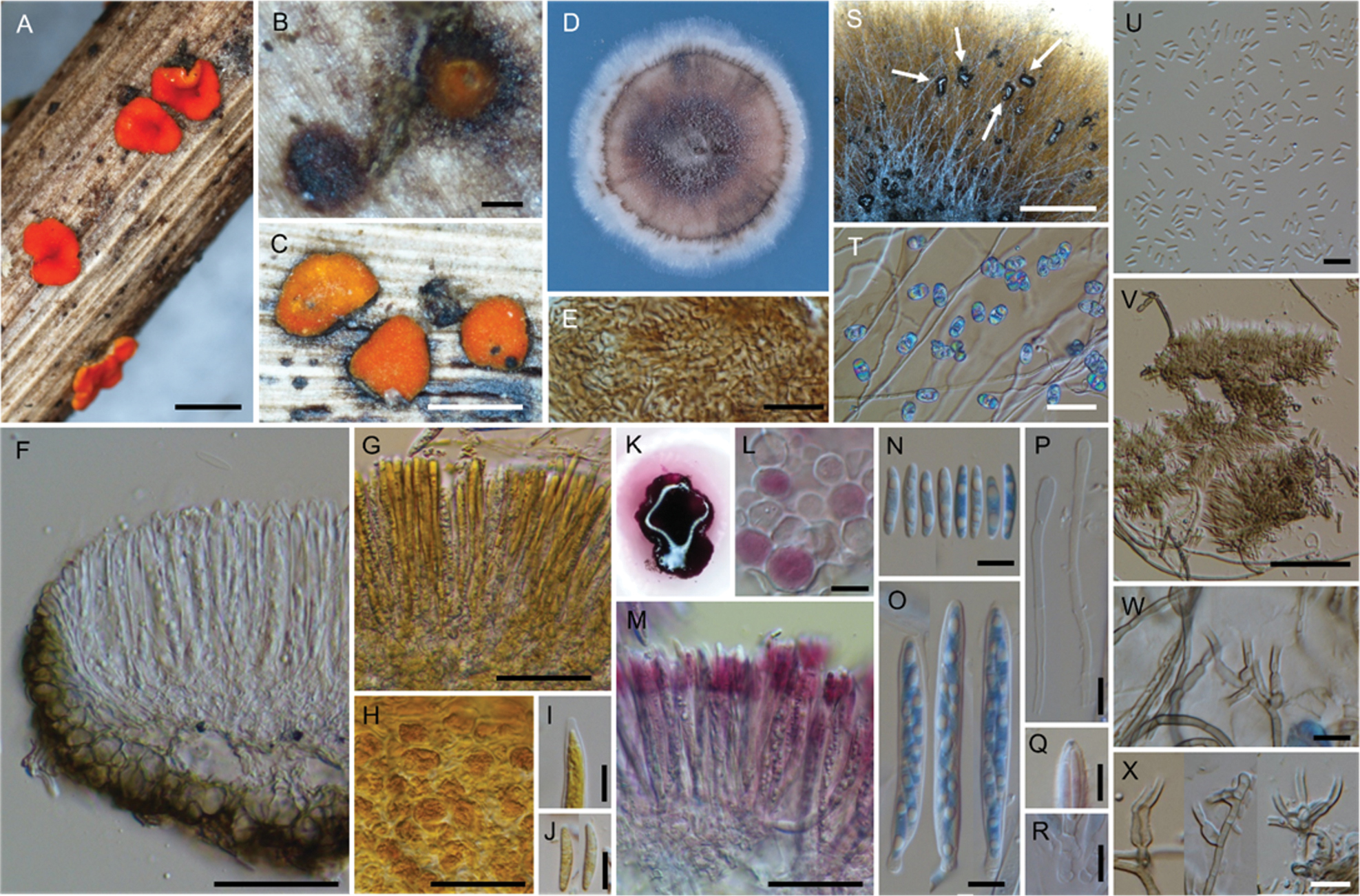
|
||
|
Neobelonopsis cinnabarina (TNS-F-86682, holotype) A fresh apothecia on the decaying culm of Miscanthus sinensis B immature apothecium protruding from the stroma C dried apothecia D one month old colony on PDA E texture of stroma (in LA) F vertical section of the apothecium (in LA) G yellowish reflective vacuoles in fresh paraphyses (in water) H yellowish vacuoles in outermost cells of fresh ectal excipulum (in water) I immature ascus with yellowish cytoplasm (in water) J ascospores with yellowish cytoplasm (in water) K apothecium that dissolved magenta pigments when immersed in 3% KOH L outermost cells that turned magenta (in 3% KOH) M fresh paraphyses that turned magenta, note that the tips have a darker color (in 3% KOH) N ascospores (in CB/LA) O asci with ascospores (in CB/LA) P paraphyses with wide, blunt head (in CB/LA) Q blue-stained apical pore of ascus (in Melzer’s solution after 3% KOH pretreatment) R crozier at the base of ascus (in CB/LA); S collapse conidiophores with slimy conidial drops on CMA (arrows) T hyphae with oblong-shape crystals on CMA U conidia (in water) V clusters of conidiophores (in water) W, X discrete conidiophores (in water). Scale bars: 1 mm (A, S); 0.1 mm (B); 0.5 mm (C); 50 μm (F–H, M, T, V); 20 μm (E); 10 μm (I, J, L, N–R, U, W, X). |